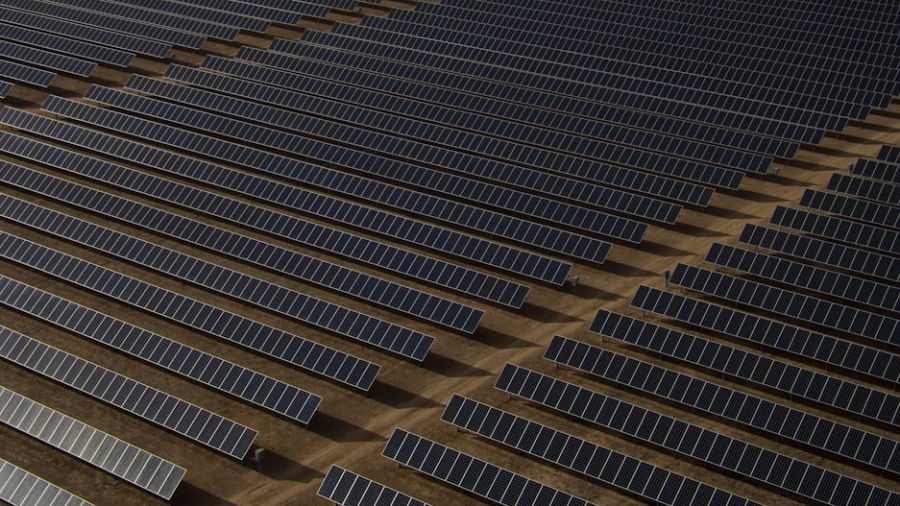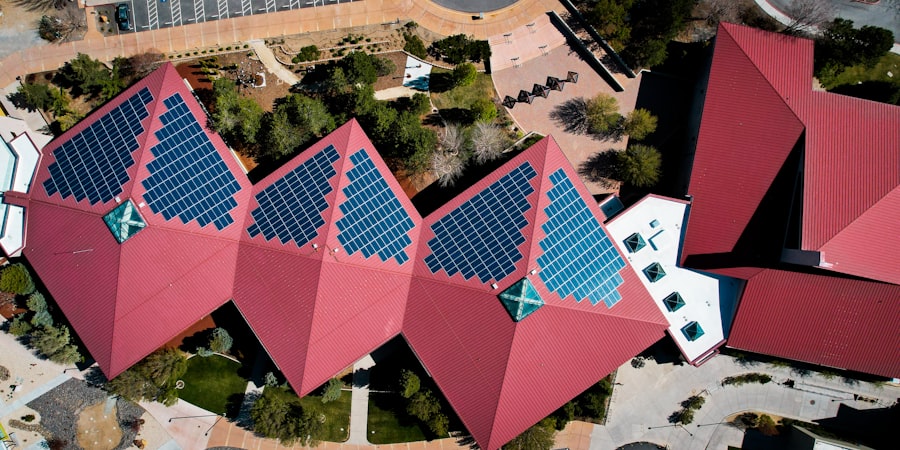Space-Based Solar Power (SBSP) represents a revolutionary approach to harnessing solar energy by capturing sunlight in space and transmitting it back to Earth. The concept, which has been explored since the 1970s, involves deploying solar panels in orbit around the Earth, where they can collect solar energy without the interference of atmospheric conditions or the day-night cycle. This method promises a continuous and abundant energy source, potentially transforming the way we generate and consume power on our planet.
The idea is not merely theoretical; it has gained traction as technological advancements and growing energy demands necessitate innovative solutions to meet global energy needs sustainably. The allure of SBSP lies in its potential to provide clean energy on a massive scale. Unlike terrestrial solar power, which is limited by geographical and meteorological factors, space-based systems can operate at peak efficiency, capturing sunlight 24 hours a day.
This capability could significantly reduce reliance on fossil fuels and mitigate the impacts of climate change. As nations grapple with energy security and environmental sustainability, SBSP emerges as a viable alternative that could reshape the global energy landscape. The exploration of this technology is not just about energy production; it also encompasses broader implications for international cooperation, technological innovation, and economic development.
Key Takeaways
- Space-Based Solar Power (SBSP) is a concept of collecting solar power in space and transmitting it wirelessly to Earth.
- Advantages of SBSP include continuous power generation, no atmospheric interference, and potential to meet global energy demands.
- Challenges of SBSP include high initial costs, technological limitations, and potential safety and environmental concerns.
- Current research in SBSP focuses on improving solar panel efficiency, wireless power transmission, and reducing launch costs.
- Potential applications of SBSP include powering remote areas, disaster relief, and reducing reliance on fossil fuels, with potential economic and environmental benefits.
Advantages and Challenges of Space-Based Solar Power
Unfiltered Sunlight and Higher Efficiency Rates
One of the most substantial benefits of Space-Based Solar Power is the ability to collect solar energy without the limitations imposed by Earth’s atmosphere. In space, solar panels can receive unfiltered sunlight, leading to higher efficiency rates compared to ground-based systems.
Constant Energy Collection and Supply
Additionally, Space-Based Solar Power systems can be designed to operate in geostationary orbits, allowing for constant energy collection regardless of weather conditions or time of day. This continuous energy supply could provide a stable and reliable power source for both terrestrial applications and space missions.
Challenges and Future Directions
However, the challenges associated with Space-Based Solar Power are equally substantial. The initial costs of launching and deploying solar panels into orbit are prohibitively high, often running into billions of dollars. The technology required for efficient energy transmission from space to Earth, typically through microwave or laser beams, is still in its infancy and poses safety concerns regarding potential impacts on wildlife and human health. Furthermore, the infrastructure needed to receive and convert this energy into usable power on Earth must be developed, which adds another layer of complexity to the implementation of Space-Based Solar Power systems. Addressing these challenges requires significant investment in research and development, as well as international collaboration to establish standards and regulations.
Current Developments and Research in Space-Based Solar Power
Recent years have seen a resurgence of interest in Space-Based Solar Power, driven by advancements in technology and a growing recognition of the urgent need for sustainable energy solutions. Various organizations and governments are investing in research initiatives aimed at overcoming the technical hurdles associated with SBSP.
This initiative focuses on developing lightweight solar panels, efficient energy transmission methods, and innovative designs for orbital platforms. In addition to governmental efforts, private companies are also entering the SBSP arena. Startups like Solaren Corporation and Space Energy Initiative are working on prototypes and feasibility studies to demonstrate the viability of SBSP systems.
These developments are complemented by academic research that investigates materials science advancements, such as the use of high-efficiency photovoltaic cells and lightweight structures that can withstand the harsh conditions of space. Collaborative projects involving multiple stakeholders are becoming increasingly common, as they pool resources and expertise to accelerate progress in this promising field.
Potential Applications and Impact of Space-Based Solar Power
The potential applications of Space-Based Solar Power extend far beyond simply providing electricity to homes and businesses. One of the most compelling uses is in supporting remote or disaster-stricken areas where traditional power infrastructure is lacking or has been compromised. SBSP could deliver energy directly to these regions, facilitating recovery efforts and improving quality of life.
Moreover, as humanity ventures further into space—whether through lunar bases or missions to Mars—the need for reliable energy sources becomes paramount. SBSP could play a critical role in powering these extraterrestrial endeavors. Furthermore, the impact of SBSP on global energy markets could be profound.
By providing a consistent and abundant energy supply, it could help stabilize prices and reduce volatility associated with fossil fuel markets.
Additionally, as countries strive to meet their climate goals, SBSP could serve as a key component in achieving net-zero emissions targets by displacing carbon-intensive energy sources.
The ripple effects of such a transition could foster economic growth through job creation in new industries related to space technology and renewable energy.
Environmental and Economic Benefits of Space-Based Solar Power
The environmental benefits of Space-Based Solar Power are significant, particularly in the context of climate change mitigation. By harnessing solar energy from space, we can reduce our dependence on fossil fuels, which are major contributors to greenhouse gas emissions. The ability to generate clean energy continuously means that SBSP could play a crucial role in decarbonizing various sectors, including transportation, industry, and residential heating.
Furthermore, since SBSP systems do not require land use on Earth—unlike traditional solar farms—they can help preserve natural habitats and agricultural land. Economically, the transition to SBSP could stimulate innovation and create new markets within the renewable energy sector. As research progresses and technology matures, we may see a reduction in costs associated with launching and maintaining space-based systems.
This could lead to competitive pricing for solar power generated in space compared to traditional sources. Additionally, the development of SBSP infrastructure could create jobs in engineering, manufacturing, and operations—contributing to economic growth in both developed and developing nations. The potential for international collaboration on SBSP projects also opens avenues for shared investment and technology transfer between countries.
Technological Innovations and Breakthroughs in Space-Based Solar Power
Technological innovations are at the heart of advancing Space-Based Solar Power from concept to reality. One area of focus is the development of lightweight materials that can withstand the rigors of space while maximizing energy capture efficiency. Researchers are exploring advanced photovoltaic technologies that utilize multi-junction cells capable of converting a broader spectrum of sunlight into electricity.
These innovations could significantly enhance the performance of solar panels deployed in orbit. Another critical aspect is the method of transmitting harvested energy back to Earth. Current research is investigating various techniques for wireless power transmission, including microwave beams that can deliver energy over long distances with minimal loss.
Safety protocols are being developed to ensure that these transmissions do not pose risks to aircraft or wildlife during their descent through the atmosphere. Additionally, advancements in robotics and autonomous systems are paving the way for more efficient assembly and maintenance of solar power satellites in orbit, reducing reliance on human intervention.
Policy and Regulatory Considerations for Space-Based Solar Power
As Space-Based Solar Power technology advances, it brings forth a host of policy and regulatory considerations that must be addressed to ensure its safe and equitable deployment. One primary concern is the governance of outer space activities; existing treaties such as the Outer Space Treaty of 1967 provide a framework but may require updates to accommodate new technologies like SBSP. International cooperation will be essential in establishing guidelines for resource utilization, environmental protection, and safety standards related to energy transmission.
Moreover, national policies will need to incentivize investment in SBSP research and development while addressing potential market disruptions caused by its introduction. Governments may consider subsidies or tax incentives for companies engaged in SBSP projects or establish public-private partnerships to share risks associated with launching new technologies into orbit. Additionally, public engagement will be crucial; educating communities about the benefits and safety measures associated with SBSP can foster acceptance and support for this innovative approach to energy generation.
The Future Outlook for Space-Based Solar Power
The future outlook for Space-Based Solar Power is promising yet complex. As technological advancements continue to unfold, we may witness significant strides toward operational SBSP systems within the next few decades. The convergence of interests from governments, private enterprises, and academic institutions suggests a collaborative approach that could accelerate progress in this field.
With increasing urgency surrounding climate change and global energy demands, SBSP may emerge as a cornerstone solution for sustainable energy production. However, realizing this potential will require overcoming substantial challenges related to cost, safety, and regulatory frameworks. Continued investment in research and development will be essential to refine technologies and address public concerns regarding health impacts from energy transmission methods.
As nations work together to explore this frontier, the vision of harnessing solar power from space may not only become a reality but also redefine our relationship with energy production on Earth—ushering in an era characterized by clean, abundant power accessible to all.
If you are interested in the future of technology, you may also enjoy reading The Next Web Brings Insights to the World of Technology. This article provides valuable insights into the latest trends and developments in the tech industry. It is a great resource for staying up-to-date with the ever-evolving world of technology.
FAQs
What is space-based solar power (SBSP)?
Space-based solar power (SBSP) is a concept of collecting solar power in outer space and transmitting it wirelessly to Earth for use as a renewable energy source.
How does space-based solar power work?
SBSP works by collecting solar energy in space using solar panels or mirrors, converting it into electrical energy, and then transmitting it to Earth using microwave or laser beams.
What are the potential benefits of space-based solar power?
Some potential benefits of SBSP include the ability to collect solar energy 24/7 (regardless of weather or time of day), the potential to provide energy to remote or disaster-stricken areas, and the reduction of reliance on fossil fuels.
What are the challenges of space-based solar power?
Challenges of SBSP include the high cost of launching and maintaining solar power satellites, the potential environmental impact of transmitting energy wirelessly, and the need for international cooperation and regulation.
What is the current status of space-based solar power technology?
While the concept of SBSP has been studied for decades, the technology is still in the experimental and theoretical stages. There are ongoing research and development efforts to address the technical and economic challenges of SBSP.
What are some potential future developments in space-based solar power?
Potential future developments in SBSP include advancements in space transportation technology, improvements in solar panel efficiency, and the development of international agreements and regulations for space-based energy generation.



